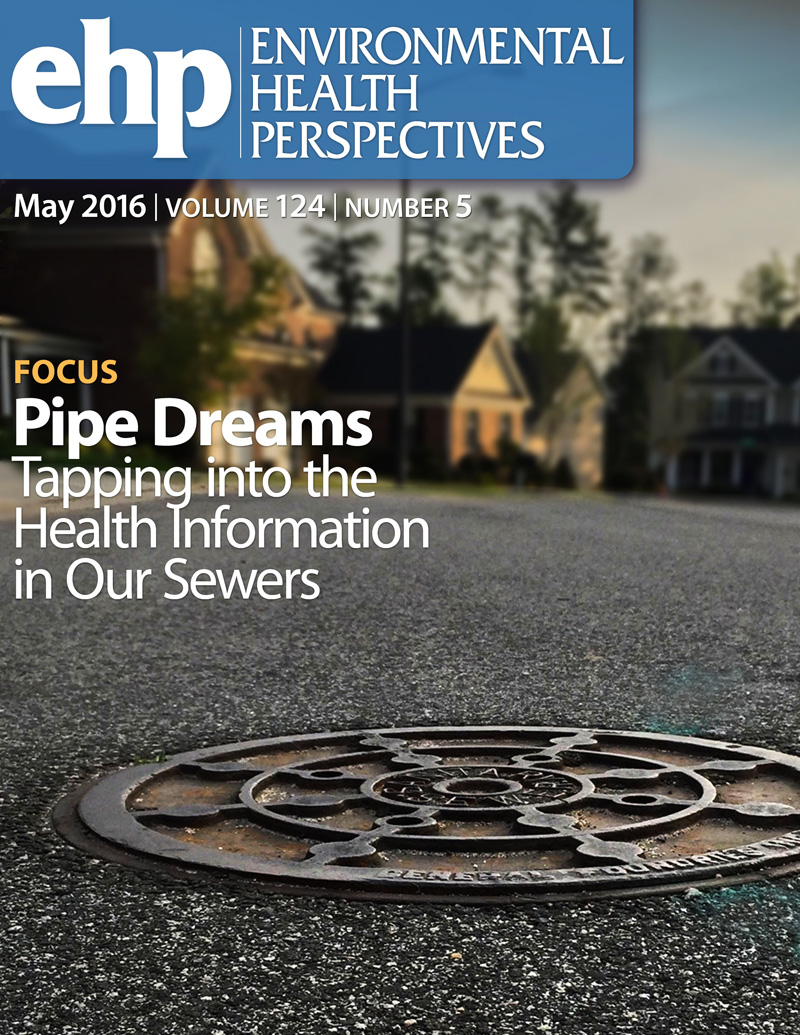Perinatal exposure to lead or diethylhexyl phthalate in mice: Sex-specific effects on cardiac DNA methylation and gene expression across time.
IF 9.8
1区 环境科学与生态学
Q1 ENVIRONMENTAL SCIENCES
引用次数: 0
Abstract
BACKGROUND Global and site-specific changes in DNA methylation and gene expression are associated with cardiovascular development, aging, and disease, but how the transcriptome and epigenome of the heart change across the life course in males vs. females, and how chemical exposures early in life influence this programming, have not yet been investigated. OBJECTIVES We used an established mouse model of developmental exposures to investigate the effects of perinatal exposure to either lead (Pb) or diethylhexyl phthalate (DEHP), two ubiquitous environmental contaminants that are both strongly associated with cardiovascular diseases (CVDs), on DNA methylation and gene expression across the life course in whole hearts. METHODS Dams were randomly assigned to receive human physiologically relevant levels of Pb (32 ppm in water), DEHP (25 mg/kg chow), or control water and chow. Exposures started two weeks prior to mating and continued until weaning at postnatal day 21 (3 weeks of age). Approximately 1 male and 1 female offspring per litter were followed to 3 weeks, 5 months, or 10 months of age, at which time whole hearts were collected (n ≥ 5 per sex per exposure). Enhanced reduced representation bisulfite sequencing (ERRBS) was used to assess the cardiac DNA methylome at 3 weeks and 10 months, and RNA-seq was conducted at all 3 time points. MethylSig and edgeR were used to identify age-related differentially methylated regions (DMRs) and differentially expressed genes (DEGs), respectively, within each sex and exposure group. Cell type deconvolution of bulk RNA-seq data was conducted using the MuSiC algorithm and publicly available single cell RNA-seq data. RESULTS Thousands of DMRs and hundreds of DEGs were identified in control, DEHP, and Pb-exposed hearts across time between 3 weeks and 10 months of age. A closer look at the genes and pathways showing differential DNA methylation revealed that the majority were unique to each sex and exposure group. Overall, pathways governing development and differentiation changed across time in all conditions. A small number of genes in each group showed significant differences in DNA methylation and gene expression with life stage, including several that were different in toxicant-exposed but not control mice. We also observed subtle, but significant differences in the proportion of several cell types that were associated with life stage, sex, or developmental exposure. DISCUSSION Together these data suggest that gene expression and DNA methylation programs, as well as cellular composition, may differ across the life course, long after cessation of exposure, in perinatal Pb or DEHP exposed mice compared to controls and highlight potential biomarkers of developmental toxicant exposures; however, additional studies are required for confirmation. Further studies are also needed to investigate how epigenetic and transcriptional differences impact cardiovascular health across the life course, particularly in old age, when the risk of cardiovascular diseases is markedly increased.. https://doi.org/10.1289/EHP15503.小鼠围产期暴露于铅或邻苯二甲酸二乙基己酯:对心脏DNA甲基化和基因表达的性别特异性影响。
DNA甲基化和基因表达的全局和位点特异性变化与心血管发育、衰老和疾病有关,但心脏的转录组和表观基因组如何在男性和女性的整个生命过程中发生变化,以及生命早期的化学物质暴露如何影响这种编程,目前尚未研究。目的:我们使用已建立的小鼠发育暴露模型,研究围产期暴露于铅(Pb)或邻苯二甲酸二乙基己酯(DEHP)对整个心脏生命过程中DNA甲基化和基因表达的影响,这两种普遍存在的环境污染物都与心血管疾病(cvd)密切相关。方法随机分配小鼠接受人体生理相关水平的铅(水中32 ppm)、DEHP (25 mg/kg chow)或对照水和chow。暴露在交配前两周开始,一直持续到出生后第21天(3周龄)断奶。每窝大约有1只雄性和1只雌性后代被跟踪到3周、5个月或10个月大,然后收集整个心脏(每次暴露每个性别≥5只)。在3周和10个月时,使用增强还原亚硫酸氢盐测序(ERRBS)来评估心脏DNA甲基化组,并在所有3个时间点进行RNA-seq。MethylSig和edgeR分别用于在每个性别和暴露组中鉴定年龄相关的差异甲基化区(DMRs)和差异表达基因(DEGs)。使用MuSiC算法和公开的单细胞RNA-seq数据对大量RNA-seq数据进行细胞类型反褶积。结果在对照组、DEHP和pb暴露的心脏中发现了数千个dmr和数百个deg,时间从3周龄到10个月。仔细观察显示DNA甲基化差异的基因和途径,发现大多数基因对每个性别和暴露组都是独特的。总的来说,在所有条件下,控制发育和分化的途径随着时间的推移而变化。各组中少数基因的DNA甲基化和基因表达随生命阶段的变化有显著差异,其中有几个基因在接触毒物的小鼠中存在差异,而在对照组中没有。我们还观察到与生命阶段、性别或发育暴露相关的几种细胞类型的比例存在细微但显著的差异。总之,这些数据表明,与对照组相比,围产期Pb或DEHP暴露小鼠的基因表达和DNA甲基化程序以及细胞组成可能在整个生命过程中,在停止暴露后很长一段时间内有所不同,并突出了发育毒性暴露的潜在生物标志物;但是,需要进一步的研究来证实。还需要进一步的研究来调查表观遗传和转录差异如何影响整个生命过程中的心血管健康,特别是在老年时,当心血管疾病的风险显着增加时。https://doi.org/10.1289/EHP15503。
本文章由计算机程序翻译,如有差异,请以英文原文为准。
求助全文
约1分钟内获得全文
求助全文
来源期刊

Environmental Health Perspectives
环境科学-公共卫生、环境卫生与职业卫生
CiteScore
14.40
自引率
2.90%
发文量
388
审稿时长
6 months
期刊介绍:
Environmental Health Perspectives (EHP) is a monthly peer-reviewed journal supported by the National Institute of Environmental Health Sciences, part of the National Institutes of Health under the U.S. Department of Health and Human Services. Its mission is to facilitate discussions on the connections between the environment and human health by publishing top-notch research and news. EHP ranks third in Public, Environmental, and Occupational Health, fourth in Toxicology, and fifth in Environmental Sciences.
 求助内容:
求助内容: 应助结果提醒方式:
应助结果提醒方式:


